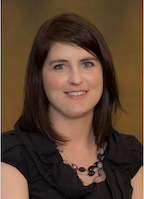NIST CoE SEMINAR SERIES

Rachel Davidson
Professor in the Department of Civil and Environmental Engineering, Associate Dean for Academic Affairs in the Disaster Research Center
University of Delaware
Rachel Davidson is a Professor in the Department of Civil and Environmental Engineering, Associate Dean for Academic Affairs, and a core faculty member in the Disaster Research Center at the University of Delaware. She leads the recently funded Coastal Hazards, Equity, Economic prosperity, and Resilience (CHEER) Hub. Davidson completed her B.S.E. from Princeton University and M.S. and Ph.D. from Stanford University. She conducts research on natural disaster risk modeling and civil infrastructure systems. Her work involves developing new engineering models to better characterize the impact of future natural disasters and use that understanding to support decisions to help reduce future losses. It focuses particularly on lifelines and risk from a regional perspective; on earthquakes and hurricanes. She is a Fellow and Past-President of the Society for Risk Analysis and recipient of the 2019 ASCE Charles Martin Duke Lifeline Earthquake Engineering award.
This talk described a computational framework that can be used to identify hurricane risk management policy solutions based on behavior of the system as a whole, including interactions among multiple types of stakeholders (homeowners, insurers, government, reinsurers) and strategies (retrofit, insurance, property acquisition). It provides specific recommendations for government policymaking and describes the outcomes different stakeholders would experience under various policies, allowing identification of policies that are likely to have broad support. The framework includes multiple interacting mathematical models—stochastic programming optimization models to represent government and insurer decisions, a Cournot-Nash model of insurer competition, empirical discrete choice models of individual homeowner decisions, computable general equilibrium model of the regional economy, and a regional loss estimation. A full-scale application for hurricane risk in eastern North Carolina suggests it is possible to identify system-wide win-win solutions that are better both for each stakeholder type individually and for society as a whole. The talk concluded with directions for on-going research taking place through the new CHEER Hub.
To download the video, click here.

Božidar Stojadinović
Chair of Structural Dynamics and Earthquake Engineering
Swiss Federal Institute of Technology (ETH) Zürich
Professor Božidar Stojadinović is the Chair of Structural Dynamics and Earthquake Engineering at the ETH Zürich, member of the ETH Risk Center, and co-PI of the ETH Future Resilient System program in Singapore. His degrees are in Civil Engineering: PhD from the University of California, Berkeley in 1995, MS from Carnegie-Mellon University in 1990 and BS (Dipl.Ing.) from the University of Belgrade, Serbia in 1988. His main research is in the field of community disaster resilience. In this area, he specializes in performance-based probabilistic resilience evaluation and design of civil infrastructure systems, buildings and bridges. Professor Stojadinović is also working on seismic design methods, earthquake response modification techniques, and on hybrid simulation methods to investigate the response of structures to dynamic loads.
Increased emphasis on resilience, specifically disaster resilience of communities, challenges engineers to do something about it. Our approach is one of a design cycle: we assess the current state for acceptability, and iteratively improve the design of actions to change the current state for the better. Making a design cycle work for community disaster resilience poses challenges: in this talk, I will focus on resilience assessment and quantification. Given a community, understood as a stem-of-systems that provide for safety and support the social and economic activities of the inhabitants, our goal is to assess how resilient this community is to disruptions, small and large, common and rare. Huge strides in this direction have been made in the past two decades. We have diverse families of model that reproduce the evolution of a community from damage to its function through the recovery process to its new state, the “swoosh” curve. But, are the numbers on the axes? Turns out they are quite different, depending on the modeling approach, model assumptions, even modelers knowhow. Quantification of community resilience for assessment and design is an urgent priority. I will present my view of the state of the art in this field, and discuss with you how to move forward. My goal is a state when we can use and thrust different models of community disaster resilience to compute comparable (if not identical) resilience metrics that support uniform, method-agnostic, resilience acceptance criteria.
To download the video, click here.

Tanya Brown-Giammanco
Director of Disaster and Failure Studies
Materials and Structural Systems - HQ
National Institute of Standards and Technology
As Disaster and Failure Studies (DFS) Director at NIST, Dr. Brown-Giammanco leads a multidisciplinary staff responsible for conducting fact-finding field investigations and studies focused on: building and infrastructure failures; successful building and infrastructure performance; evacuation and emergency response systems; and disaster recovery and community resilience; which can be carried out under four different statutory authorities at NIST. The results of these field investigations are intended to inform recommendations to improve codes, standards, and practice. Prior to joining NIST, Dr. Brown-Giammanco served as Managing Director of Research at the Insurance Institute for Business & Home Safety (IBHS), where she led teams conducting full-scale laboratory and field studies on hail, wind, rain, wildfire, and roofing related projects. She has held a Faculty Associate appointment at Texas Tech since 2010. Dr. Brown-Giammanco earned a PhD in Wind Science and Engineering at Texas Tech University, and a master's degree in Water Resources Science and a bachelor's degree in Atmospheric Science, both from the University of Kansas. Dr. Brown-Giammanco's research has focused on natural hazards and their effects on buildings and roofing, the development of laboratory testing methodologies, and the development of tools, metrics, and statistical relationships to quantify and explain damage states, to advocate for better building practices and materials.
Standards are used as a means to ensure specific qualities are met or processes are followed, in areas throughout our lives. From the shingles on our roofs, to the monitor for our computers, to the crayons that our children draw with, standards are used as a means to ensure safety, quality, and uniformity. This presentation will review what a standard is, how they are developed and updated, how NIST’s Disaster and Failure Studies Program plays a role in the standards process, and will introduce the development of a new standard to estimate the wind speed in tornadoes and other damaging events.
To download the video, click here.

Shannon Van Zandt
Professor & Executive Associate Dean
College of Architecture
Texas A & M University
Shannon Van Zandt's scholarship is at the intersection of affordable housing with disaster impacts, resilience, and recovery, with particular interest in how residential land use patterns exacerbate or mitigate exposure to natural hazards, specifically flooding. She focuses on pre-disaster planning that prevents the exorbitant costs, both financial and on individual lives, that recent hurricanes have wrought on coastal communities, as well as how to mitigate these events in the future.
Nearly every American community has been shaped by historic racial/ethnic segregation resulting from overt discrimination in the real estate, lending, and development industries (“redlining”). These preexisting patterns have been shown to be critical predictors of both damage and recovery, since they influence not just hazard exposure, but also both physical and social vulnerability. Van Zandt will show how this structural racism has been manifested over many decades in communities’ land development patterns, infrastructure investment, and overall maintenance, which has led to disparities in damage, which in turn exacerbate inequities in recovery. Over time, these forces—originating with racial discrimination dating back to the 1930s and 40s—appear to contribute to the permanent displacement of more vulnerable residents and redevelopment of previously affordable housing into less affordable housing types, favoring affluent stakeholders but limiting the availability of much-needed housing
To download the video, click here.

Paolo Bocchini
Associate Professor and Director of Graduate Programs
Department of Civil and Environmental Engineering
Lehigh University
Dr. Bocchini is an Associate Professor and Director of Graduate Programs in the Department of Civil and Environmental Engineering of Lehigh University. His research is related to the application of probabilistic concepts, computational mechanics, operational research, and other analytical and numerical tools to civil engineering problems. Currently, his main focus is resilience assessment and optimal allocation of resources for the design, retrofit, and recovery of infrastructure systems subjected to extreme events. He leads large interdisciplinary teams and published his research in premiere archival journals; his paper on resilience and sustainability is the most cited in the ASCE-Journal of Infrastructure Systems.
This presentation discussed possible solutions to the challenges that arise from regional analysis, such as the need for multi-scale models and the extensive use of accurate but efficient surrogate models, the necessity to go beyond site-specific hazard representations; the importance of capturing the role of humans-in-the-loop and their decision making, as well as the complex dependencies and interdependencies emerging among the various agents in these complex situations.
To download the video, click here.

Mark Levitan
Research Engineer, Structures Group
Engineering Laboratory
National Institute of Standards and Technology
Marc Levitan is the Lead Research Engineer for the National Windstorm Impact Reduction Program at the National Institute of Standards and Technology. He has over 25 years in research on tornado, hurricane, and extreme wind effects on buildings and structures. With respect to tornado research, Dr. Levitan served as lead investigator for NIST's National Construction Safety Team technical investigation of the Joplin tornado, as well as for the NIST study of the 2013 Moore tornado. Dr. Levitan also leads implementation of many recommendations resulting from these investigations, including chairing: the SEI committee developing tornado load provisions for ASCE 7-22; the ICC committee that developed the 2020 edition of the ICC 500 Storm Shelter standard; and the ASCE/SEI/AMS committee developing a new standard on Wind Speed Estimation in Tornadoes.
This presentation provided an overview of the development of tornado load provisions proposed for incorporation into ASCE 7-22. These provisions are based on the wind load framework provided in ASCE 7-16 for other types of windstorms with modifications for tornadoes. Design speeds are defined using the first-ever engineering-derived probabilistic tornado wind speed maps, which also account for the dependency of tornado risk on the plan size of the building or structure. Unique tornado characteristic such as the bullnose-shaped vertical velocity profile, strong updrafts, and atmospheric pressure change are also accounted for. These tornado load proposals are currently working their way through the standards approval process for inclusion in ASCE 7-22.
To download the video, click here.

 News & Updates
News & Updates Photo Gallery
Photo Gallery

 Seminars
Seminars